
views
- Measure the height of the door, from the top of the bottom threshold to underneath the top piece of trim.
- Measure the width of the door, from inside the trim on the left to inside the trim on the right.
- Use these measurements when purchasing a storm door.
Measuring For Your Storm Door
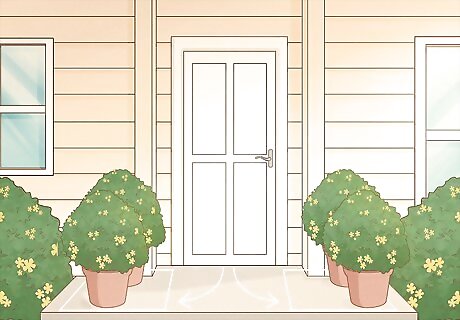
Check for any obstructions. Before you take any measurements, you should first have a quick glance around the doorway to check for any potential obstructions that would affect the installation of your storm door. Look for the placement of door handles, exterior lights, the mailbox and even the doorbell. In some cases these items may interfere with the installation of the storm door or prevent it from closing properly. If this is the case, you may need to relocate them or switch to smaller door handles. Look at the placement of pillars on the front porch to see if the storm door will have enough room to swing outwards once installed. At this point you may also want to decide which way you want your storm door to open. Do you want the handle on the right and the hinges on the left (left-hinged outswing) or the handle on the left and the hinges on the right (right-hinged outswing)?
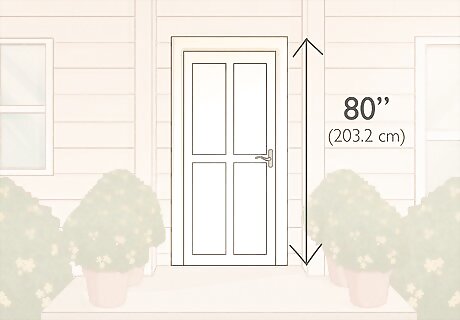
Measure the height of the door. Measure the height of the door in 3 places from the top of the bottom threshold to the underside of the top piece of trim (also known as the header). Place the tape measure on top of the threshold (which is usually made of concrete or silver/brass metal) and stretch it to the bottom side of the top piece of exterior trim. Do this on the left side of the door opening, the center of the opening and on the right side of the opening and make a note of each measurement. Normally, you will get measurements somewhere between 80" to 81" on newer homes and 96" to 97" on openings with older, larger doors. Highlight the smallest of the three measurements, as this is the one you will be working with.
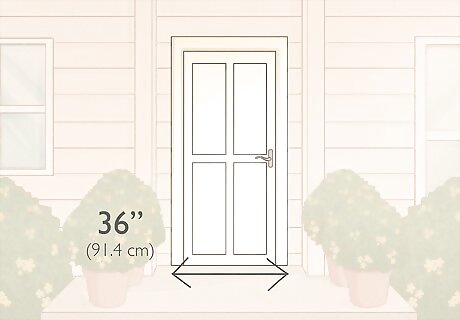
Measure the width of the door. Measure the width of the door from left to right, from inside of trim to inside of trim (or the inside face of the brick mold). Do this in three places: at the top of the door opening, in the middle of the door opening (around the handle) and at the bottom of the door opening. Make a note of all three measurements. Highlight the smallest measurement, as this is the one you'll be using.
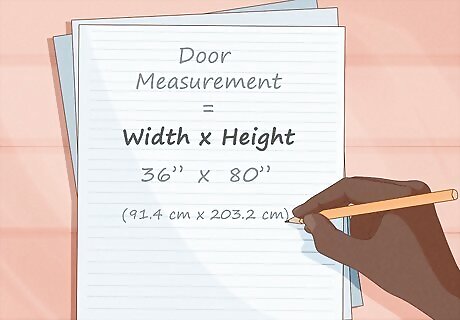
Estimate the door measurements. Take the smallest measurements from the door width and door height and write them in "width x height" format. For example, if your smallest width measurement was 36 inches (91.4 cm) and your smallest height measurement was 80 inches (203.2 cm), then you would write 36" x 80". This is the measurement you will use when purchasing a storm door. If you want to be completely sure that your measurements are accurate, repeat the process a second time.
Choosing the Right Storm Door

Buy a standard-sized storm door. All pre-hung storm doors come in a range of standard sizes, which vary slightly from manufacturer to manufacturer. Therefore, all you need to do is match your personal door measurements to the closest standard size. Choose a storm door manufacturer (such as Larson, Andersen, or EMCO) and consult their doorway opening size guide to match your measurements. For example, following the Larson size guide, a door opening measuring 35-7/8" x 80" would require a 36" x 81" standard-size storm door.
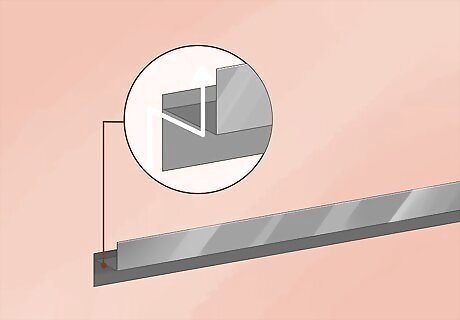
Use a z-bar. Sometimes the width of your door measures more than the standard sized storm doors. In this situation, it is possible to purchase a z-bar extender kit to fill in the excess space between the door trim and the storm door. This is a convenient option that saves you the trouble of ordering a custom-sized door. However, it is only possible if the door opening is less than an inch wider than the largest standard door size.

Order a custom storm door. If your door has unusual measurements that don't fit within the standard sizes, you may need to order a custom-sized storm door. Once you do this, you're ready to install the storm door yourself. Happy installation! This may be more expensive than the cost of standard sized doors, but it will be worth it for a properly fitting storm door. Most of the main storm door manufacturers off a service for ordering custom sized door.












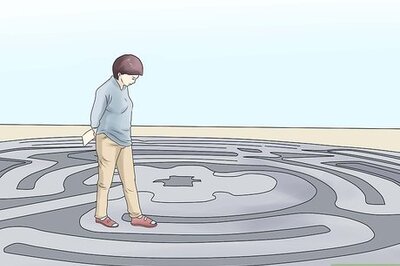



Comments
0 comment